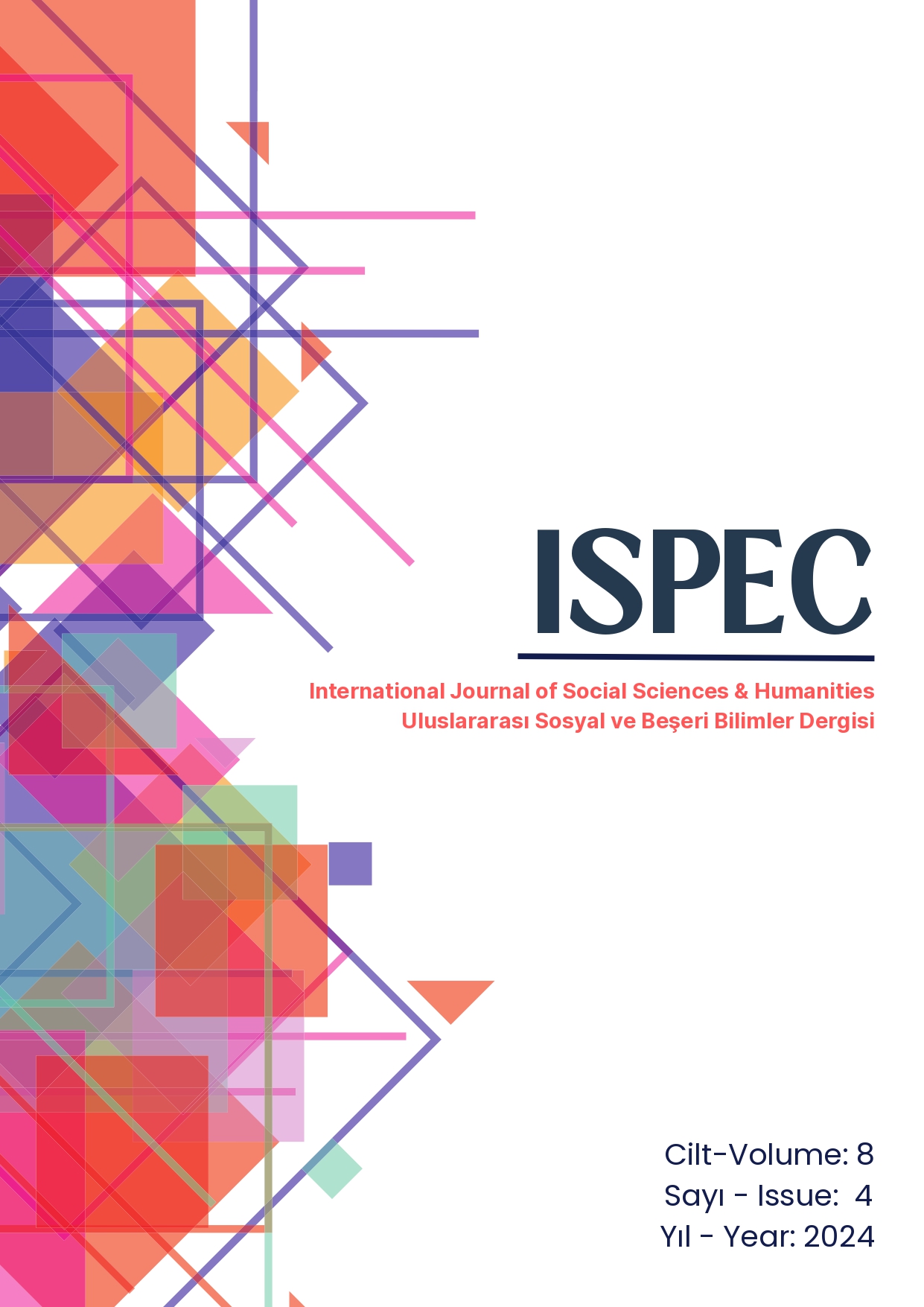Cognitive Behavioral Therapy in Generalized Anxiety Disorder: A Case Report
DOI:
https://doi.org/10.5281/zenodo.14502362Keywords:
Generalized anxiety disorder, cognitive behavioural therapy, obsessive compulsive disorderAbstract
In this case report, the treatment process of a 15-year-old female client with cognitive behavioural therapy who showed symptoms of generalized anxiety disorder according to DSM-5 diagnostic criteria was discussed. It is explained how the obsessions and compulsions that accompany the client's anger and anxiety problems, which she sees primarily as a problem, are handled with the cognitive behavioural therapy approach. A total of 12 sessions of interviews were held with the client. Firstly, information about the disease was given and psychoeducational techniques were applied. Generalized anxiety disorder (GAD) is a disorder that manifests itself in different areas of life and has physical symptoms such as excessive worry, inability to concentrate, and muscle tension. One of the treatment methods known to be effective in the treatment of generalized anxiety disorder is cognitive behavioural therapy. Cognitive behavioural therapy (CBT) is frequently used in the treatment of psychopathologies and draws attention to the relationship between thoughts, behaviour and emotions. As a result of the interventions made during the treatment, there were changes in thought and behavioural dimensions. It seems that more studies on generalized anxiety disorder are needed in cognitive behavioural therapy. The procedure followed during the treatment process and the results are included in the discussion section.
References
Amerikan Psikiyatri Birliği (2014). Ruhsal bozuklukların tanısal ve sayımsal elkitabı (DSM -5). E. Köroğlu. (Çev.). (5. Baskı). Ankara: HYB yayıncılık.
Ataca, B., Kağıtçıbaşı, Ç. ve Diri, A. (2005). Turkish family and the value of children: Trends over time. G. Trommsdorff ve B. Nauck (Ed.), The value of children in crosscultural perspective: Case studies from eight societies (s. 91-121) . Pabst Publishers.
Bouchard S, Mendlowitz S, Coles MF ve ark. (2004) Considerations in use of exposure with children. Cogn Behav Pract, 11: 56-65.
Çakmakçı F (2004) Çocuklarda anksiyete bozukluklarını tarama ölçeği geçerlik ve güvenirlik çalışması. Yayınlanmamış Uzmanlık Tezi. Kocaeli Üniversitesi Tıp Fakültesi Anabilim Dalı, Kocaeli.
Dragan, N., Kamptner, L. ve Riggs, M. (2021). The Impact of the early caregiving environment on self-compassion: The mediating effects of emotion regulation and shame. Mindfulness, 12(7), 1708-1718. doi: 10.1007/s12671-021-01634-4
Gelenberg AJ, Lydiard RB, Rudolph R ve ark (2000) Efficacy of venlafaxine extended-release capsules in nondepressed outpatients with generalized anxiety disorder: a 6-month randomized controlled trial. JAMA, 283: 3082-8
Heimberg, R. G., Hofmann, S. G., Liebowitz, M. R., Schneier, F. R., Smits, J. A., Stein, M.B., Hinton, D. E., & Craske, M. G. (2014). Social anxiety disorder in DSM-5. Depression and Anxiety, 31(6), 472–479.
Kessler, R. C., Chiu, W. T., Demler, O., Merikangas, K. R., & Walters, E. E. (2005). Prevalence, severity, and comorbidity of 12-month DSM-IV disorders in the National Comorbidity Survey Replication. Archives of General Psychiatry, 62(6), 617-627.
Li, R., Kajanoja, J., Karlsson, L., Karlsson, H. ve Karukivi, M. (2022). Sex-specific role of alexithymia in associations between parental bonding and mental health: A moderated mediation model. Journal of clinical psychology, Advance online publication. doi: 10.1002/jclp.23372.
Newman, M. G., Shin, K. E. ve Zuellig, A. R. (2016). Developmental risk factors in generalized anxiety disorder and panic disorder, Journal of Affective Disorders, 206, 94-102.
Papulu N, Erol N (1999) Obsesif kompulsif bozukluğun ilkokul ve ortaokul çocuklarında görülme sıklığı: Norm çalışması. Çocuk ve Gençlik Ruh Sağlığı Dergisi, 6(2): 89-98.
Pollack MH, Zaninelli R, Goddard A ve ark (2001) Paroxetine in the treatment of generalized anxiety disorder: results of a placebo-controlled, flexible dosage trial. J Clin Psychiatry, 62: 350-7
Ross, L. T. ve Wynne, S. (2010). Parental depression and divorce and adult children’s well-being: The role of family unpredictability. Journal of Child and Family Study, 19,757-761
Seligman LD, Ollendick TH (2011) Cognitive behavioral therapy for anxiety disorders in youth. Child Adolesc Psychiatric Clin N Am, 20(2): 217-238.
Sorias O (2008) Bilişsel davranışçı terapi. Çocuk ve Ergen Psikiyatrisi Temel Kitabı. Editörler: F Çuhadaroğlu Çetin ve ark. Hekimler Yayın Birliği, Ankara, s.667-678.
Starcevic, V. (2010). Anxiety disorders in adults: A clinical guide (2nd Edition). Oxford University Press.
Taylor, C. D., Bee, P. ve Haddock, G. (2017). Does schema therapy change schemas and symptoms? A systematic review across mental health disorders. Psychology and Psychotherapy: Theory, Research and Practice, 90(3), 456-479.
Treynor W, Gonzalez R, Nolen-Hoeksema S (2003) Rumination reconsidered: a psychometric analysis. Cognitive Ther Res 27:247-59.
Downloads
Published
How to Cite
Issue
Section
License
Copyright (c) 2024 ISPEC International Journal of Social Sciences & Humanities

This work is licensed under a Creative Commons Attribution-NonCommercial-NoDerivatives 4.0 International License.






